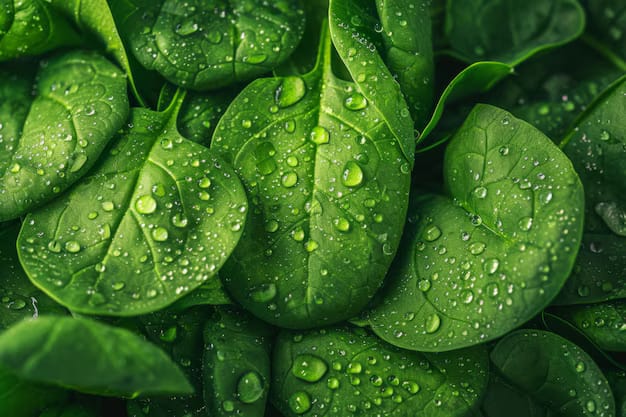10 Vegetables to Plant in August Our Recommended Sowing Methods
August is a prime time to refresh your garden and prepare for a robust fall harvest. As temperatures begin to cool, certain vegetables thrive, allowing you to extend your growing season and enjoy fresh produce long after summer ends. Here are ten vegetables to plant in August, each with our recommended sowing methods to help you cultivate a successful and productive garden.
1. Spinach

Sowing Method: Spinach is a cool-weather crop that excels in the late summer garden. Direct sow seeds in well-drained soil, spacing them about 1 inch apart, with rows about 12 to 18 inches apart. Cover seeds lightly with soil and water thoroughly. Spinach prefers soil temperatures between 50-70°F, making late summer ideal for planting. Ensure the soil remains consistently moist for optimal growth, and consider using row covers to protect young plants from pests.
Growing Tips: Spinach is fast-growing, with leaves ready to harvest in just 40 to 50 days. To encourage a continuous harvest, sow seeds every two weeks. Keep the soil rich in organic matter to promote leaf growth and flavor.
2. Radishes

Sowing Method: Radishes are one of the easiest vegetables to grow, making them perfect for late-season planting. Direct sow seeds into the soil, about half an inch deep and 1 inch apart, with rows spaced about 6 to 12 inches apart. Radishes thrive in cool weather and will mature quickly, typically within 4 weeks.
Growing Tips: Thin seedlings ensure proper spacing, which prevents overcrowding and ensures uniform growth. Keep the soil consistently moist and free of weeds, which can compete for nutrients. Radishes are also excellent companion plants, deterring pests from other vegetables.
3. Carrots

Sowing Method: Carrots are a root vegetable that benefits from loose, well-aerated soil. Direct sow seeds in furrows about a quarter-inch deep and 2 inches apart, with rows spaced 12 to 18 inches apart. Lightly cover the seeds with soil and water gently. Carrots require consistent moisture, so keep the soil evenly watered.
Growing Tips: To ensure straight growth, make sure the soil is free of rocks and clumps. Mulching around the seedlings helps retain moisture and suppress weeds. Carrots planted in August will have a sweeter flavor as they mature in the cooler fall temperatures.
4. Beets

Sowing Method: Beets are versatile and can be grown for both their roots and greens. Direct sow seeds in the garden about 3 inches apart, with rows spaced 12 to 18 inches apart. Thin seedlings once they reach about 3 inches in height to prevent overcrowding.
Growing Tips: Beets prefer slightly acidic to neutral soil and thrive with consistent watering. They are sensitive to heat, so planting them in August allows them to grow in cooler, more favorable conditions. Beets are ready to harvest when they reach about 2 inches in diameter, although you can also enjoy the tender greens as they grow.
5. Lettuce

Sowing Method: Lettuce is a cool-season crop that can be directly sown into the garden or started indoors and transplanted. Space seeds about an inch apart and cover lightly with soil, ensuring consistent moisture. For best results, sow seeds in partial shade to avoid bolting during warm spells.
Growing Tips: Lettuce can be harvested as baby greens or allowed to mature to full heads. To extend your harvest, plant different varieties and sow every two weeks. Regular watering and a nitrogen-rich fertilizer will help produce lush, tender leaves.
6. Kale

Sowing Method: Kale is hardy and can withstand cooler temperatures, making it ideal for late summer planting. Direct sow seeds in well-drained soil, spacing them about 1 inch apart, with rows 18 to 24 inches apart. Thin seedlings to about 12 inches apart as they grow.
Growing Tips: Kale benefits from rich, well-fertilized soil and consistent moisture. Harvest leaves as needed, starting with the oldest leaves on the outside. Kale’s flavor often improves with exposure to cooler weather and light frosts.
7. Turnips

Sowing Method: Turnips grow quickly and are well-suited for August planting. Direct sow seeds in a sunny location, about half an inch deep and 3 inches apart, with rows spaced 12 to 18 inches apart. Thin seedlings to 4 inches apart once they reach 4 inches in height.
Growing Tips: Turnips prefer well-drained, fertile soil and consistent moisture. Both the roots and greens are edible, making them a versatile addition to your garden. Harvest turnips when they reach 2 to 3 inches in diameter for the best flavor.
8. Swiss Chard
Sowing Method: Swiss chard is a leafy green that can be sown directly in the garden. Plant seeds about a half-inch deep and 6 inches apart, with rows spaced 18 inches apart. Swiss chard tolerates both heat and cold, making it a resilient crop for August planting.
Growing Tips: Chard leaves can be harvested individually, allowing the plant to continue producing throughout the season. Keep the soil rich in organic matter and consistently watered to encourage vibrant, healthy leaves.
9. Bush Beans

Sowing Method: Bush beans are quick-growing and ideal for late summer planting. Direct sow seeds about an inch deep and 3 inches apart, with rows spaced 18 to 24 inches apart. Bush beans prefer warm soil but will mature rapidly, offering a harvest in about 50 to 60 days.
Growing Tips: Ensure the soil is well-drained and rich in nutrients. Regular watering is essential, particularly during flowering and pod development. Harvest beans regularly to encourage continued production.
10. Broccoli

Sowing Method: Start broccoli seeds indoors in seed trays, 6 to 8 weeks before the first expected frost. Once seedlings have grown a few inches and developed strong roots, transplant them outdoors, spacing them about 18 inches apart in a sunny location.
Growing Tips: Broccoli thrives in cooler weather, so planting in August allows for maturation in ideal conditions. Fertilize regularly with a balanced fertilizer, and keep the soil moist. Harvest heads when they are firm and tight for the best flavor.
General Tips for August Planting

- Soil Preparation: Before planting, ensure your soil is rich in organic matter and well-aerated. Adding compost or aged manure can enhance soil fertility and structure.
- Consistent Watering: August can be hot and dry, so maintain consistent watering to keep the soil moist. Using drip irrigation or soaker hoses can help provide steady moisture without overwatering.
- Mulching: Apply a layer of mulch around your plants to retain soil moisture, regulate temperature, and suppress weeds. Organic mulches like straw or wood chips are particularly beneficial.
- Pest and Disease Management: Monitor your garden for signs of pests and diseases. Implement natural pest control methods, such as introducing beneficial insects or using neem oil, to protect your crops.
- Succession Planting: Consider planting in succession every couple of weeks to ensure a continuous harvest. This technique allows for a steady supply of fresh produce.
By carefully selecting these vegetables and following the recommended sowing methods, you can enjoy a flourishing garden that provides delicious, fresh produce well into the fall season. Happy gardening!



